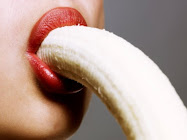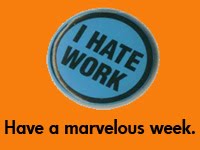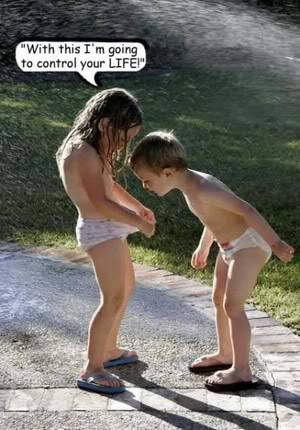The eight-day festival of Passover is celebrated in the early spring, from the 15th through the 22nd of the Hebrew month of Nissan. It commemorates the emancipation of the Israelites from slavery in ancient Egypt. And, by following the rituals of Passover, we have the ability to relive and experience the true freedom that our ancestors gained. So the story goes …After many decades of slavery, during which time the Israelites were subjected to backbreaking labor and unbearable horrors, G d saw the people's distress and sent Moses to Pharaoh with a message: …"the ten devastating plagues, afflicting them and destroying everything from their livestock to their crops. While doing so, G d spared the Children of Israel, "passing over" their homes—hence the name of the holiday. The resistance was broken, and he virtually chased his former slaves out of the land. The Israelites left in such a hurry, in fact, that the bread they baked as provisions for the way did not have time to rise. Many thousands of adult males, plus many more woman and children, left Egypt on that day, and began the trek to Mount Sinai and their birth as G d's chosen people. Thus Passover is divided into two parts. 1) The first two days and last two days (that commemorate the splitting of the Red Sea) are full-fledged holidays. Holiday candles are lit at night, and Kiddush and sumptuous holiday meals are enjoyed on both nights and days. We don't go to work, drive, write or switch on or off electric devices. We are permitted to cook and to carry outdoors. b) The middle four days are called Chol Hamoed, semi-festive "intermediate days," when most forms of work are permitted. To commemorate the unleavened bread that the Israelites ate when they left Egypt, we don't eat or even retain in our possession any "chametz" from midday of the day before Passover until the conclusion of the holiday - any food or drink that contains even a trace of wheat, barley, rye, oats, spelt or their derivatives and wasn't guarded from leavening or fermentation. This includes bread, cake, cookies, cereal, pasta, and most alcoholic beverages. Moreover, almost any processed food or drink can be assumed to be chametz unless certified otherwise. Ridding our homes of chametz is an intensive process. It involves a full-out spring-cleaning search-and-destroy mission during the weeks before Passover, and culminates with a ceremonial search for chametz on the night before Passover, and then a burning ceremony on the morning before the holiday. Chametz that cannot be disposed of can be sold to a non-Jew for the duration of the holiday. Seders which really the highlight of Passover observed only on the first two nights of the holiday. The Seder is a fifteen step, family oriented, tradition and ritual packed feast. The focal points of the Seder are:
• Eating matzah.
• Eating bitter herbs—to commemorate the bitter slavery endured by the Israelites.
• Drinking four cups of wine or grape juice—a royal drink to celebrate our newfound freedom.
• The recitation of the Haggadah, a liturgy that describes in detail the story of the Exodus from Egypt. The Haggadah is the fulfillment of the biblical obligation to recount mostly to your children the story of the Exodus on the night of Passover.
There's much more but I just don't have time but the central idea is there... Happy Passover! Happy Easter!
skip to main |
skip to sidebar

















![]()
















My life, My times

~WELCOME TO MY PAGE. ~AKA...NO BS ZONE ~
I'm just odd, overly sarcastic at times, internally optimistic, constantly intrigued, a believer, prefer few over many, hopeless romantic, but a dreamer all-throughout...from the books I read, to the clothes I wear, to the places I’ve travelled, to the movies I watch, to the music I listen to, to the men I’ve loved...this is my world, take a seat, relax and
just live in it...just feel me!
"Passion make the world go around. Love makes it a safer place." -Ice T
just live in it...just feel me!
"Passion make the world go around. Love makes it a safer place." -Ice T

About Moi

- We live in a very tense society. We are pulled apart...and we all need to learn how to pull ourselves together....I think that at least part of the answer lies in solitude.
LIFE IS COLOURFUL, EMBRACE IT

OBSERVE

SAVOUR EACH MOMENT

STOP TO SMELL THE ROSES

EAT, DRINK IN LIFES BEAUTY

PICK GENTLE SOULS

SPREAD YOUR WING

BE UNIQUE

GET PERSPECTIVE

IN THE SEA OF LIFE

KEEP YOUR FRIENDS CLOSE

...BUT KEEP YOUR ENEMIES CLOSER

IN THE MEANTIME

Blog Archive
-
▼
2010
(108)
- ► 12/12 - 12/19 (1)
- ► 12/05 - 12/12 (2)
- ► 11/21 - 11/28 (1)
- ► 11/14 - 11/21 (1)
- ► 10/17 - 10/24 (1)
- ► 10/03 - 10/10 (9)
- ► 09/26 - 10/03 (5)
- ► 09/19 - 09/26 (1)
- ► 09/12 - 09/19 (3)
- ► 05/02 - 05/09 (3)
- ► 04/18 - 04/25 (5)
- ► 04/11 - 04/18 (5)
- ► 04/04 - 04/11 (5)
- ▼ 03/28 - 04/04 (7)
- ► 03/21 - 03/28 (1)
- ► 03/14 - 03/21 (5)
- ► 02/28 - 03/07 (26)
- ► 02/21 - 02/28 (27)

I'm not saying I'm perfect,
In fact I'm far from it,
I'm just saying I'm worth it!
In fact I'm far from it,
I'm just saying I'm worth it!

At times, we're alone?...its because you've closed the door

"Did you cry a lot lately?...you were cleansing your soul."

"Do you feel spiteful?...it was a lesson on forgivness! "

''Do you feel lonely? Look around you & you will see people waiting for your smile just 2 get close


SPEAK TO ME SUGAR LIPS

Monday bloody Monday

...You feel me?



My Blog List





